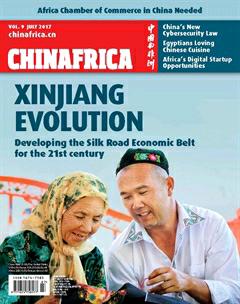Xinjiang on the Rise
Located in northwest China, Xinjiang Uygur Autonomous Region is often seen as a stereotypical example of landlocked remoteness, seeking opportunities for development.
The reality on the ground however couldnt be further from the truth.
Xinjiang, which shares a 5,600-km border with eight different countries, covers one-sixth of Chinas land mass. The region is also rich in energy resources and is home to more than 40 ethnic minority groups. For these reasons Xinjiang became a strategic loca- tion on the ancient Silk Road. Today, the region is building on its glorious past and striving to chart a new path forward.
Under the Belt and Road Initiative, proposed by Chinese President Xi Jinping during his visits to Central Asia and Southeast Asia in 2013, Xinjiangs unique geographical assets and its role as an open window to the international market are now valued more than ever. Its position as a central area of the Silk Road Economic Belt has been clarified and strengthened, according to an official document titled Vision and Actions on Jointly Building Silk Road Economic Belt and 21st-Century Maritime Silk Road, issued in March 2015. According to the document, the Chinese Government plans to transform Xinjiang into a center for transport, trade, logistics, culture, science and education to deepen exchanges and cooperation with countries of Central Asia, South Asia and West Asia.
This partly explains why Xinjiang is now the subject of increased attention from investors.
Xinjiang is also a region famous for its cultural abundance. With the construction of international roads, railways and airways, the region is more accessible now than ever before to visitors from around the world. As in the past, it is today a center of intense cultural exchange between Eastern and Western civilizations.
To examine the changes in Xinjiang, ChinAfrica interviewed entrepreneurs who chose to move their companies to the region to take advantage of Belt and Road Initiative opportunities, looked at the diversity and preservation of traditional cultures and went back to school to find out how a preferential learning program is giving ethnic minorities top class education.

